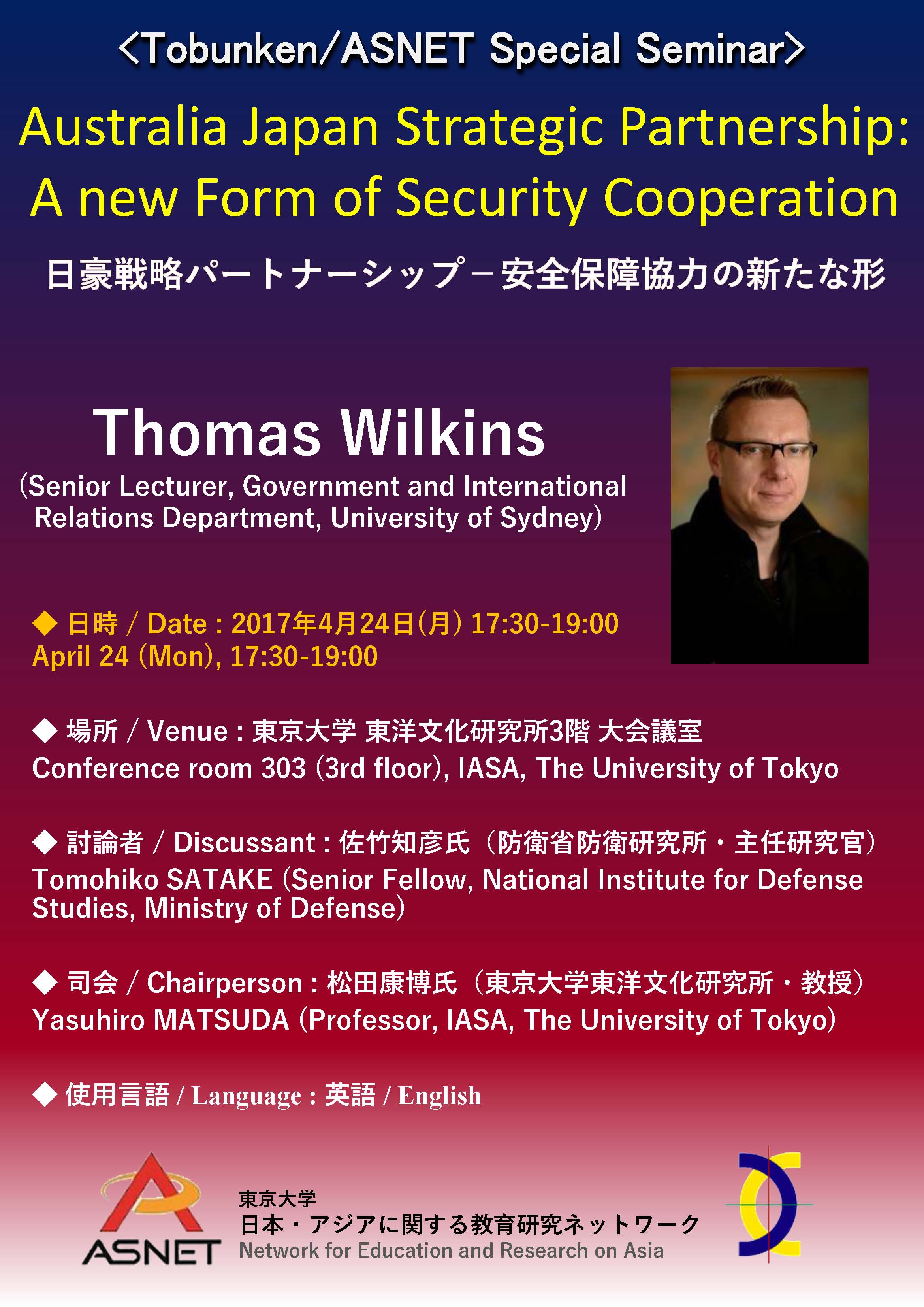以下の通り、第165回目の東文研・ASNET共催特別セミナーを開催します。
| 日時/Date | 2017年4月24日(月) 17:30-19:00 April 24 (Mon), 5:30-7:00 p.m. |
|---|---|
| 会場/Venue | 東京大学 東洋文化研究所3階 大会議室 Conference room 303 (3rd floor), IASA, The University of Tokyo |
| 報告者/Speaker | トーマス・ウィルキンズ氏(シドニー大学政 Thomas Wilkins (Senior Lecturer, Government and International Relations Department, University of Sydney) |
| 題名/Title | 日豪戦略パートナーシップ――安全保障協力の新たな形 Australia Japan Strategic Partnership: A new Form of Security Cooperation |
| 討論者/Discussant | 佐竹知彦氏(防衛省防衛研究所・主任研究官) Tomohiko SATAKE (Senior Fellow, National Institute for Defense Studies, Ministry of Defense) |
| 司会/Chairperson | 松田康博氏(東京大学東洋文化研究所・教授)
Yasuhiro MATSUDA (Professor, IASA, The University of Tokyo) |
| 要旨/Abstract | Japan’s current ‘special relationship’ with Australia is predicated upon a carefully nurtured Strategic Partnership founded upon the Joint Declaration on Security Cooperation in 2007, and subsequently augmented. It is especially significant since it established the template that Tokyo has sought to apply to a series of elevated bilateral relationships with other such partners. There are several notable features of the strong security alignment with Australia. First, it has been the easiest to facilitate and attracted bipartisan support in Japan, as in Australia, making it the most successful (‘special’) of Japan’s new security alignments to date. Second, as such, it has served as a type of proving ground’ for a range of new Japanese foreign policy objectives – overseas arms exports, overseas military operations, intelligence sharing, as well as a diplomatic ‘demonstration effect’ for historical reconciliation. Third, while the strategic partnership represents a major departure from Japan’s overreliance upon the US-alliance (‘decentering’) on the one hand, on the other it actually underwrites Japan’s commitment to the US-alliance system (‘re-centering’). This latter process manifesting itself through the Trilateral Strategic Dialogue (TSD) and contributing to Washington’s policy of ‘connecting’ its various allies more closely into an integrated front. All these factors make the Australian case study a suitable benchmark for comparative analysis with Japan’s other less developed strategic partnerships. |
| 使用言語/Language | 英語/English |


